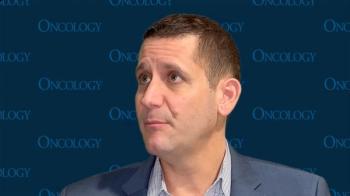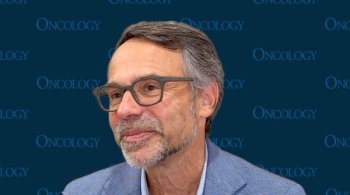
Highlighting Challenges to Patient Treatment in Rare Lymphomas
A paucity of prospective, well-vetted data to guide therapy in patients with rare lymphomas may result in a reliance on expert consensus guidelines.
Treatment for rare lymphomas, which only account for approximately 2% to 5% of all lymphomas, may rely on extrapolating data from single-arm studies, studies of related diseases, or consensus guidelines to inform practice, according to Neha Mehta-Shah, MD, MSCI.
CancerNetwork® spoke with Mehta-Shah, associate professor in the John T. Milliken Department of Medicine in the Division of Oncology at the Washington University Medical School in St Louis, MO, about challenges she has observed related to rare lymphomas that health care is facing when treating these patients.
Emphasizing issues with rare lymphoma research, Mehta-Shah initially outlined the state of these indications, suggesting that they only account for a small percentage of lymphomas. Due to a paucity of research, local pathologists may be reliant upon an expert laboratory, academic medical center, or reference laboratory for diagnoses, which may take weeks to discern. She expressed that this can be particularly difficult for patients with symptomatic lymphomas, who may experience disease progression while waiting for a diagnosis to inform the next steps for treatment.
Contrasting lymphomas with other diseases, such as breast and lung cancers, which often have large randomized controlled trials to guide therapy, Mehta-Shah suggested that there is a paucity of prospective, well-vetted data to inform therapy for patients with rare lymphomas. Mehta-Shah concluded by explaining that smaller studies, studies of related diseases, and consensus guidelines may end up informing practice, which makes treatment less reliable in treating patients with rare lymphomas.
Transcript:
There are [many] issues that make it harder to treat patients who have rare lymphomas. Then there are additional issues with rare lymphoma research. Particularly rare lymphomas ––now we are talking about lymphomas that make up 2% to 4% or 5% of all lymphomas––often are understudied. Some of these are diseases for which [it] is particularly...challenging for pathologists to make the diagnosis, [because] it often takes a longer time to make the diagnosis [as some] may never have seen this disease before. We usually have to send the biopsy [samples] off to an expert laboratory, academic medical center, or reference laboratory, and that can often take weeks to make the diagnosis, which can be [quite] hard for both doctors and patients, particularly if patients are symptomatic.
When we look at how much information there is to guide our options for therapy, there is often a paucity of prospective, well-vetted data to help guide therapy. In other diseases, like breast cancer or lung cancer, we are fortunate to have these large studies where half the patients got treatment X and half the patients got treatment X plus Y, and you can inform patients about what their choice is and the risks [and benefits] of adding Y to X...
In rare diseases, [more specifically] rare lymphomas, sometimes [in] the whole study, to help inform a patient’s therapy, there could have been [15 to 30] patients and all those patients [received] the same therapy. It was not directly compared with any other therapy. Sometimes you are extrapolating information from related diseases to their disease. It can be hard to take care of these patients because it requires digesting the information that is available and sometimes relying on expert consensus guidelines to help guide your decision-making.
Newsletter
Stay up to date on recent advances in the multidisciplinary approach to cancer.
















































































